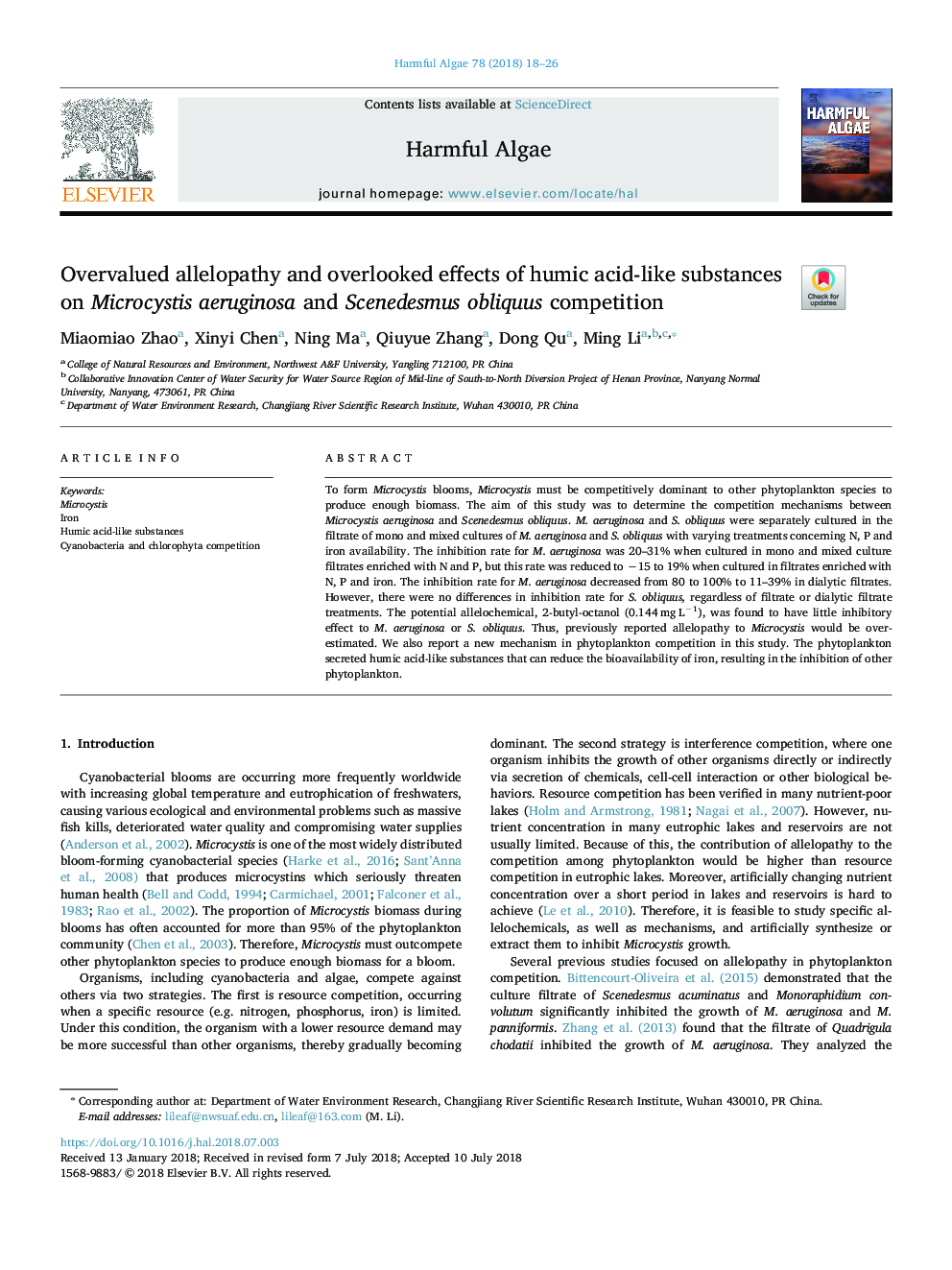| Article ID | Journal | Published Year | Pages | File Type |
|---|---|---|---|---|
| 8885617 | Harmful Algae | 2018 | 9 Pages |
Abstract
To form Microcystis blooms, Microcystis must be competitively dominant to other phytoplankton species to produce enough biomass. The aim of this study was to determine the competition mechanisms between Microcystis aeruginosa and Scenedesmus obliquus. M. aeruginosa and S. obliquus were separately cultured in the filtrate of mono and mixed cultures of M. aeruginosa and S. obliquus with varying treatments concerning N, P and iron availability. The inhibition rate for M. aeruginosa was 20-31% when cultured in mono and mixed culture filtrates enriched with N and P, but this rate was reduced to â15 to 19% when cultured in filtrates enriched with N, P and iron. The inhibition rate for M. aeruginosa decreased from 80 to 100% to 11-39% in dialytic filtrates. However, there were no differences in inhibition rate for S. obliquus, regardless of filtrate or dialytic filtrate treatments. The potential allelochemical, 2-butyl-octanol (0.144âmgâLâ1), was found to have little inhibitory effect to M. aeruginosa or S. obliquus. Thus, previously reported allelopathy to Microcystis would be overestimated. We also report a new mechanism in phytoplankton competition in this study. The phytoplankton secreted humic acid-like substances that can reduce the bioavailability of iron, resulting in the inhibition of other phytoplankton.
Keywords
Related Topics
Life Sciences
Agricultural and Biological Sciences
Aquatic Science
Authors
Miaomiao Zhao, Xinyi Chen, Ning Ma, Qiuyue Zhang, Dong Qu, Ming Li,
